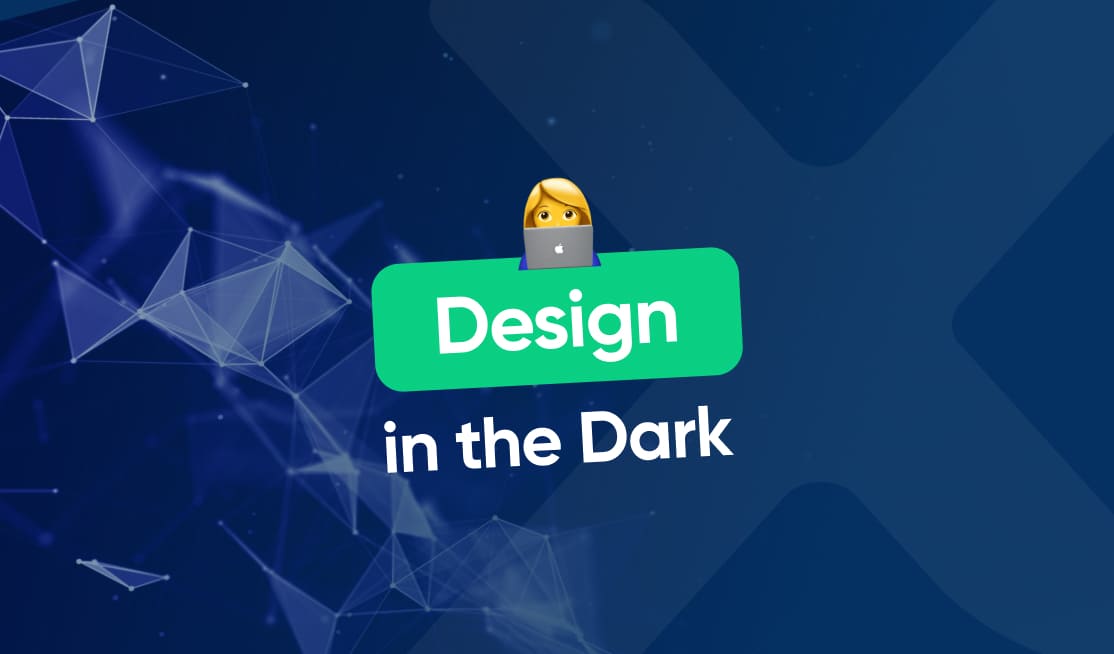
Dark mode has become increasingly popular in recent years, with more and more websites and applications offering this sleek and visually appealing option. This article will delve into the concept of dark mode and explore its technical aspects, as well as provide insights into designing, testing, and optimizing dark mode for an enhanced user experience. Furthermore, we will discuss common challenges faced during dark mode implementation and how to overcome them effectively.
Understanding the Concept of Dark Mode
Before diving into the technicalities of dark mode implementation, it’s essential to grasp the underlying concept and understand why it has gained so much traction in web design. Dark mode, as the name implies, is a user interface theme where the predominant color scheme is dark, often utilizing shades of black, gray, and dark blues or greens to replace the traditional light backgrounds and bright text of the light mode.
Dark mode has revolutionized the way users interact with digital interfaces by providing a sleek and modern alternative to the classic light mode. This shift in design aesthetics has been driven by a combination of factors, including changing user preferences, advancements in display technology, and a growing awareness of the impact of screen brightness on eye health.
The Science Behind Dark Mode
Dark mode has several scientific principles supporting its advantages. The human eye is naturally adapted to low light conditions, making dark mode beneficial in reducing eye strain and minimizing the emission of blue light, which can disrupt sleep patterns. Additionally, dark backgrounds can enhance the visibility of certain colors and create a more immersive user experience.
Studies have shown that prolonged exposure to bright screens, especially in dimly lit environments, can lead to digital eye strain. By incorporating dark mode into web design, developers can help mitigate this issue and promote healthier viewing habits among users. The contrast provided by dark backgrounds can also make text and images stand out more prominently, improving overall readability and user engagement.
The Benefits of Dark Mode in Web Design
Beyond its aesthetic appeal, dark mode offers various benefits for both users and developers. It can improve readability, especially in low light environments, by reducing glare and increasing text contrast. Moreover, dark mode can prolong battery life on devices with OLED or AMOLED screens, as darker pixels consume less power. It also allows users to customize their interface preference, contributing to a personalized browsing experience.
From a developer’s perspective, implementing dark mode can enhance the accessibility of a website or application, catering to a wider audience with varying visual preferences and needs. By offering a dark mode option, developers can demonstrate a commitment to inclusivity and user-centric design, ultimately improving the overall user experience and satisfaction.
The Technical Aspects of Implementing Dark Mode
Implementing dark mode requires careful consideration of the technical aspects involved. From selecting the necessary tools to understanding key coding considerations, developers must navigate a specific set of challenges to ensure a seamless dark mode experience.
Dark mode has gained popularity not only for its aesthetic appeal but also for its potential benefits in reducing eye strain and improving battery life, particularly on devices with OLED screens. As developers delve into the implementation process, they must balance design preferences with technical feasibility to create a user-friendly experience across various platforms and devices.
Necessary Tools for Dark Mode Implementation
Thankfully, various tools and frameworks are available to assist developers in implementing dark mode. CSS preprocessors like Sass and Less offer the flexibility to define variables for different color schemes, simplifying the process of switching between light and dark themes. Additionally, JavaScript libraries such as Dark Mode.js provide easy-to-use functions for toggling between modes based on user preferences.
For a more dynamic approach, CSS custom properties (CSS variables) can be utilized to store color values and facilitate theme changes with minimal code modification. By leveraging these tools effectively, developers can create a robust dark mode implementation that enhances user experience without compromising design integrity.
Coding for Dark Mode: Key Considerations
When coding for dark mode, it’s crucial to carefully plan the architecture of the CSS and HTML. Using separate stylesheets for light and dark themes can help avoid conflicts and streamline maintenance. It’s also essential to consider accessibility aspects and ensure that all text, buttons, and interactive elements maintain sufficient contrast levels for readability.
Moreover, optimizing performance in dark mode involves more than just color inversion. Developers should pay attention to image rendering, font choices, and animation effects to ensure a cohesive visual experience in both light and dark themes. By conducting thorough testing across different devices and screen sizes, developers can fine-tune their dark mode implementation for optimal performance and user satisfaction.
Designing for Dark Mode
While the technical aspects play a vital role in implementing dark mode, the design considerations should not be overlooked. Crafting a visually appealing and cohesive dark mode experience requires careful attention to color schemes, contrast, and typography.
When designing for dark mode, it’s crucial to consider the emotional impact of colors on users. Dark backgrounds can evoke a sense of sophistication and elegance when paired with the right color palette. Deep blues, rich purples, and charcoal grays can create a calming and immersive experience. However, it’s essential to strike a balance between using dark colors for the background and ensuring that text and other essential elements remain easily legible.
Color Schemes and Contrast in Dark Mode
Selecting an appropriate color scheme is essential to avoid strain on the user’s eyes in dark mode. Opting for a combination of desaturated colors and high contrast pairings can enhance visibility and readability. It’s important to focus on maintaining clear distinctions between different interface elements and effectively utilizing shadows and gradients to create depth.
Moreover, incorporating accent colors strategically can help draw attention to important elements on the screen. Vibrant hues used sparingly against a dark backdrop can create visual interest and guide users’ focus to key interactive elements, such as buttons or links.
Typography and Readability in Dark Mode
Typography plays a significant role in ensuring readability, especially in dark mode. Choosing fonts specifically optimized for screen reading and ensuring sufficient contrast between text and background are vital considerations. Additionally, adjusting font weight and line spacing can contribute to improved readability and overall user experience.
When it comes to typography in dark mode, experimenting with different font styles can add personality to the interface. Serif fonts can convey a sense of tradition and formality, while sans-serif fonts offer a modern and clean aesthetic. By carefully selecting fonts that align with the brand’s identity and the overall tone of the interface, designers can create a cohesive and engaging user experience.
Testing and Optimizing Dark Mode
Effective testing and optimization are crucial to delivering a flawless dark mode experience to users. Ensuring user comfort and accessibility, as well as evaluating performance and minimizing any potential drawbacks, are essential steps in the iterative process of fine-tuning dark mode implementation.
Ensuring User Comfort and Accessibility
Conducting extensive user testing is imperative to identify any discomfort or readability issues users may face in dark mode. Obtaining feedback and making necessary adjustments to typography, colors, and contrast can significantly enhance accessibility and overall user experience. Additionally, providing users with the ability to customize various dark mode elements allows for a more tailored browsing experience.
Moreover, considering factors such as screen brightness and ambient lighting conditions can further improve the user experience in dark mode. Adapting the interface dynamically based on these environmental variables can help maintain optimal readability and reduce eye strain for users in various settings.
Performance Evaluation and Optimization
Dark mode’s influence on loading times and overall performance must be carefully assessed. Optimizing image assets, reducing unnecessary animations, and employing caching techniques are critical for maintaining fast and efficient dark mode functionality. Striving for a lightweight and well-performing dark mode is essential to ensure a smooth user experience across a variety of devices and platforms.
Furthermore, considering the impact of dark mode on battery consumption for mobile devices is vital. Implementing energy-efficient design practices and monitoring resource usage can help mitigate any potential battery drain issues associated with prolonged dark mode usage. Balancing performance optimization with energy efficiency is key to providing users with a seamless dark mode experience without compromising device functionality.
Overcoming Challenges in Dark Mode Implementation
Despite its many benefits, dark mode implementation can present a series of challenges for developers. It’s important to be aware of common pitfalls and their potential solutions to ensure a seamless transition to dark mode.
Common Pitfalls and How to Avoid Them
One common challenge is the improper handling of images and icons in dark mode. Ensuring that images remain visible and legible through color adjustments or alternative versions can prevent visual inconsistencies. Additionally, avoiding hard-coded colors and relying on CSS variables or preprocessors for color definitions helps maintain consistency across various themes or modes.
Troubleshooting Dark Mode Issues
When encountering dark mode compatibility issues, troubleshooting CSS conflicts and reviewing browser-specific quirks is essential. Utilizing available browser developer tools and testing on different devices and platforms can help uncover and resolve any rendering or styling inconsistencies that may arise.
Conclusion
In conclusion, implementing dark mode in web design involves a careful understanding of its benefits, technical aspects, and design considerations. By utilizing appropriate tools, taking key coding considerations into account, and designing for readability and visual appeal, developers can create a captivating and accessible dark mode experience. Thorough testing, optimization, and overcoming common challenges are integral parts of successfully implementing dark mode and reaping its benefits in modern web design.


